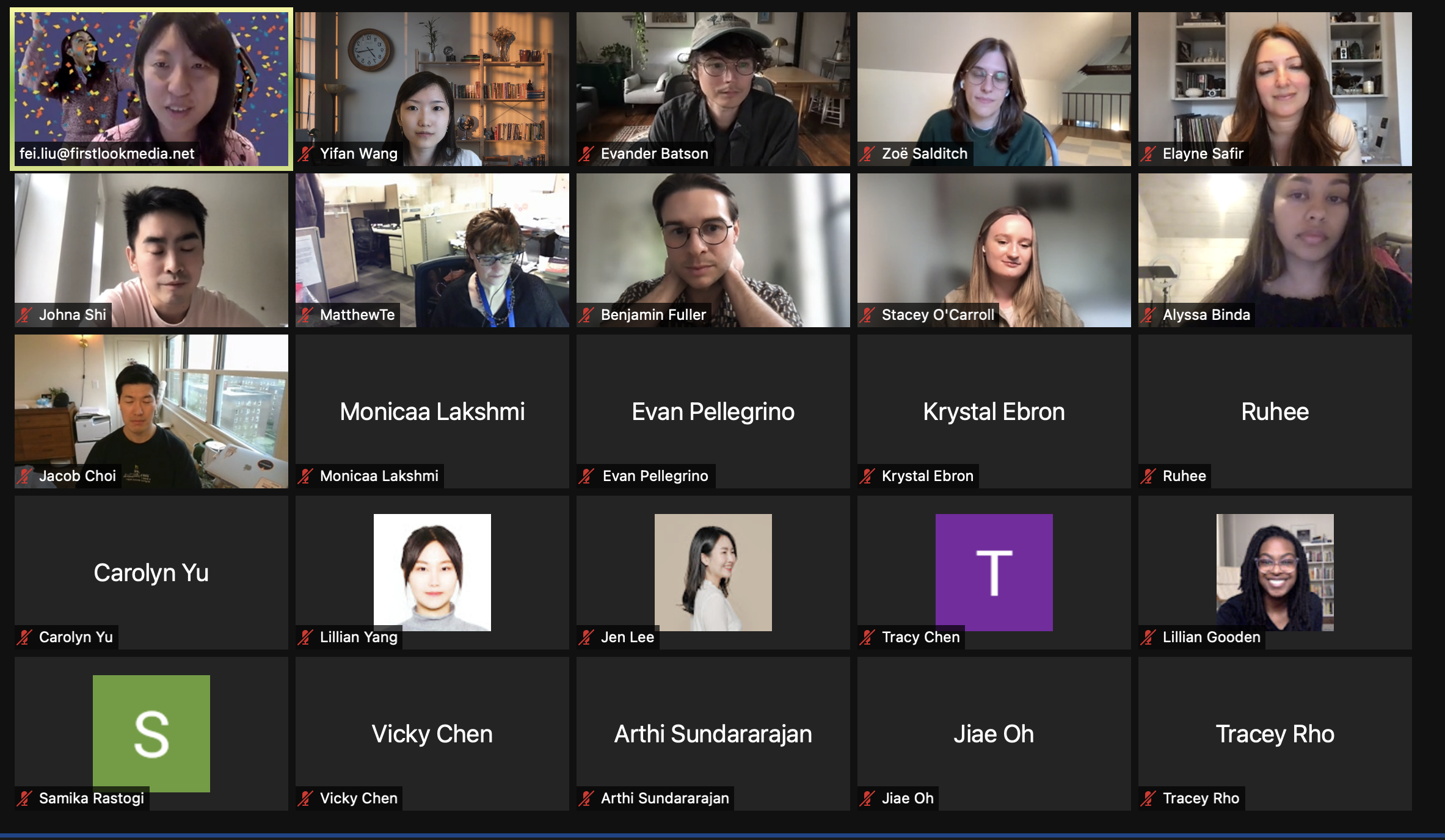Digital Product Design ︎ Jan-May 2022
Bluessom - A Virtual Social App that Helps People Deal with Seasonal Affective Disorder (SAD)
Abstract
Seasonal Affective Disorder (SAD) is a strong tendency to become depressed during a specific time of the year — most often in late fall, continuing into winter. It affects 10 million Americans, 3% of the population. Also, the recovery process can be tedious & lonesome.
To help with people who have SAD, we are committed to creating Bluessom, an App that aims to help others to find peace during their mental health journey, and bring community to those who feel alone while going through seasonal or general depression.
Tools
Figma
Figma
Team
Yifan Wang,
Alyssa Binda,
Jacob Choi,
Johna Shi
Yifan Wang,
Alyssa Binda,
Jacob Choi,
Johna Shi
Responsibility
UX Researcher and Designer
UX Researcher and Designer

WHAT IS BLUESSOM?
Bluessom is a Virtual social app that helps people deal with seasonal affective disorder (SAD).
- To encourage users to do activities
- To foster a community
- To provide a safe space
SECONDARY RESEARCH
What is seasonal affective disorder?
Seasonal affective disorder is a strong tendency to become depressed during a specific time of the year — most often in late fall, continuing into winter. There can be other years when the dip is milder than a full depression, or even absent. Summers are most often symptom-free.
What causes it?
Winter SAD is linked to less daylight, which is exacerbated by spending more time indoors. The sensitivity to these changes varies by individual. Some people react to the first signs of seasonal change around the fall equinox in September, while others’ moods don’t plunge until December. The most common period for the onset of a SAD episode is late October through November. January and February are the worst months overall, and the symptoms don’t fully subside until early May. Given the continued time spent indoors through the ongoing pandemic, symptoms experienced during winter may not abate with the arrival of spring next year.
How many people are affected by SAD?
Seasonal affective disorder is estimated to affect 10 million Americans, or 3% of the population. An additional 10% may have mild cases. The disorder affects women four times more than men, and usually begins between the ages of 18 and 30, though children can suffer too.
What are the symptoms?
Physical symptoms that precede the mood shift include difficulty waking up on schedule, daytime fatigue, a craving for carbohydrates, and weight gain.
SURVEY
To find out who our users are and how poeple cope with SAD, our UX team thought it would be beneficial to administer surveys and preliminary interviews. We administered surveys to 14 people. 4 respondants were male; 10 respondants were female.
KEY FINDINGS & INSIGHTS
- Preliminary research shows that SAD mostly affects women from the ages of 18-30. However, from our surveys and interviews we found out that (SAD) affects men just as much as it affects women. Male respondents reported their moods during SAD as being moderate (3) to severe (5)
-
More than 80% of respondants said that they cope with SAD by calling someone or meeting someone. This emphasized the social need for people experiencing SAD.
- 50% of respondants said that the most effective way to dealing with depression is to engage in activities such as cooking, exercising, making art etc. This showed us that people feel being active is necessary when coping with depression.
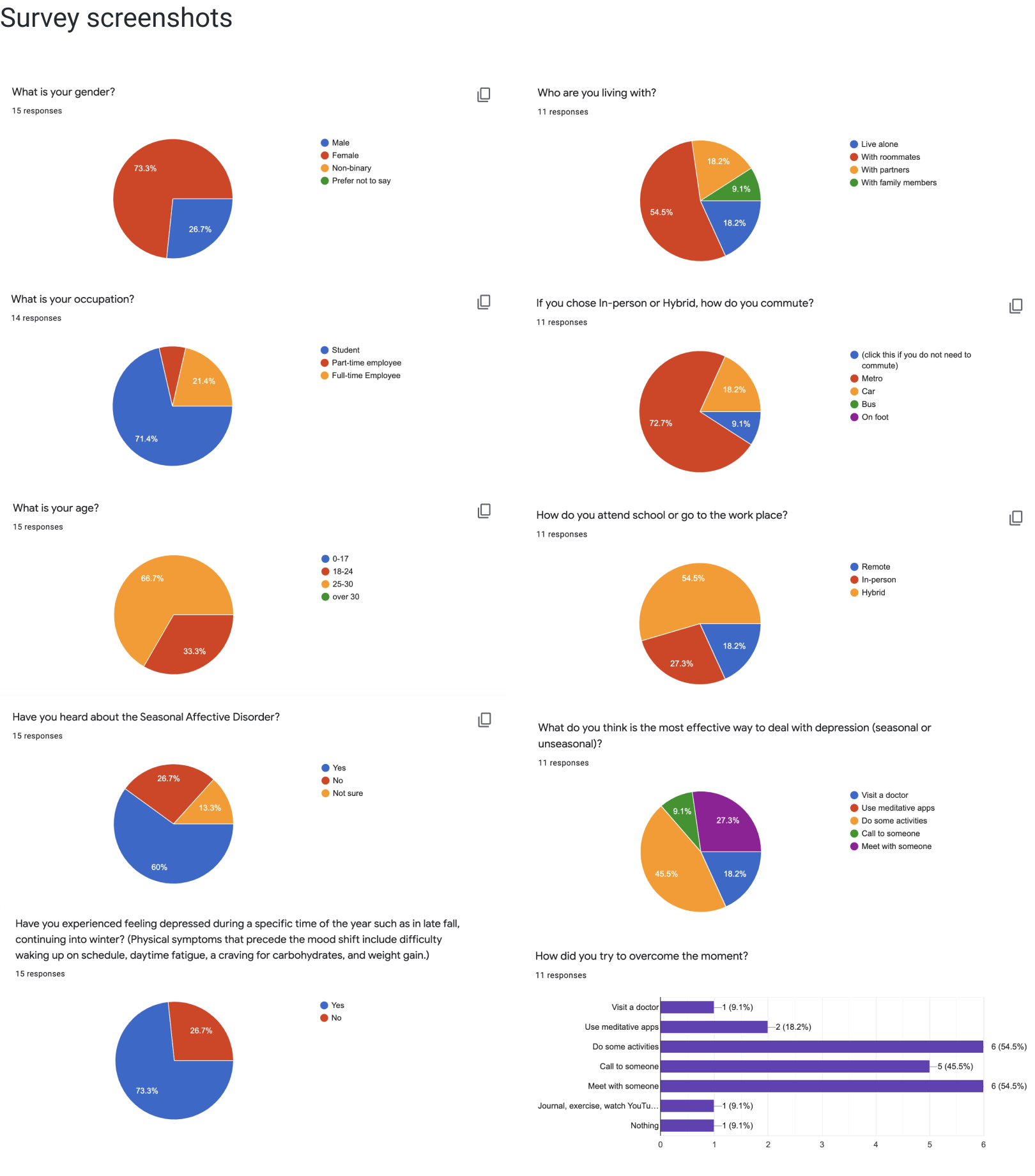
IN-DEPTH INTERVIEWS
To find out more research and gain more insights on how people feel when they go through a period of depression our team conducted in-depth interviews. Interview questions were organized careful so that participants felt comfortable sharing their experience with depression. Each team member moderated two interviews (8 interviews in total).
INTERVIEW QUESTIONS
- Describe a moment where you were feeling down or blue. How were you feeling?
- Have you experienced winter depression? If so, what are the symptoms?
- How long did those feeling or symptoms last?
- What do you usually do when you have negative emotions or feel depressed?
- What activities seemed to help lessen the symptoms or elevate your mood when you experience depressive emotions?
- How often do you practice/do those activities when you feel depressed?
- How long does it take to do those activities in general ? (if apply)
- Who would you talk to when you are going through depressive times? & why?
- How did you communicate with them? (In person meet, call, text or video chat)
- Would you consider talking with strangers that are having similar feelings? Tell me more
- In your opinion, what is the worst thing to do when experiencing winter blues or general depression?
- If you got through depression, what would you tell your past self? How would you guide your past self in coping with depression?
KEY FINDINGS & INSIGHTS
- Participants associated depression with feelings of anxiety, lonliness, loss of purpose, loss of motivation, frustration, fatigue and helplessness.
- Many participants highlighted that even small tasks like getting out of bed and brushing their teeth is hard during depressive seasons. This led us to realize that even the smallest motivations and activities are powerful to help people cope with depression.
- Participants cope in many different ways such as participating in activities that bring them joy, exercising, listening to music, and talking to someone else.
- Communication during depression is conditional. Participants are willing to talk to someone else only if they feel that other person knows exactly what they are going through and what it feels like.
- Some participants highlighted that for some people opening up and being vulnerable with others may be uncomfortable or even burdening to others.
- All participants mentioned getting into some sort of routine and stop ruminating over negative thoughts as ways to guide themselves through depression.

PERSONAS

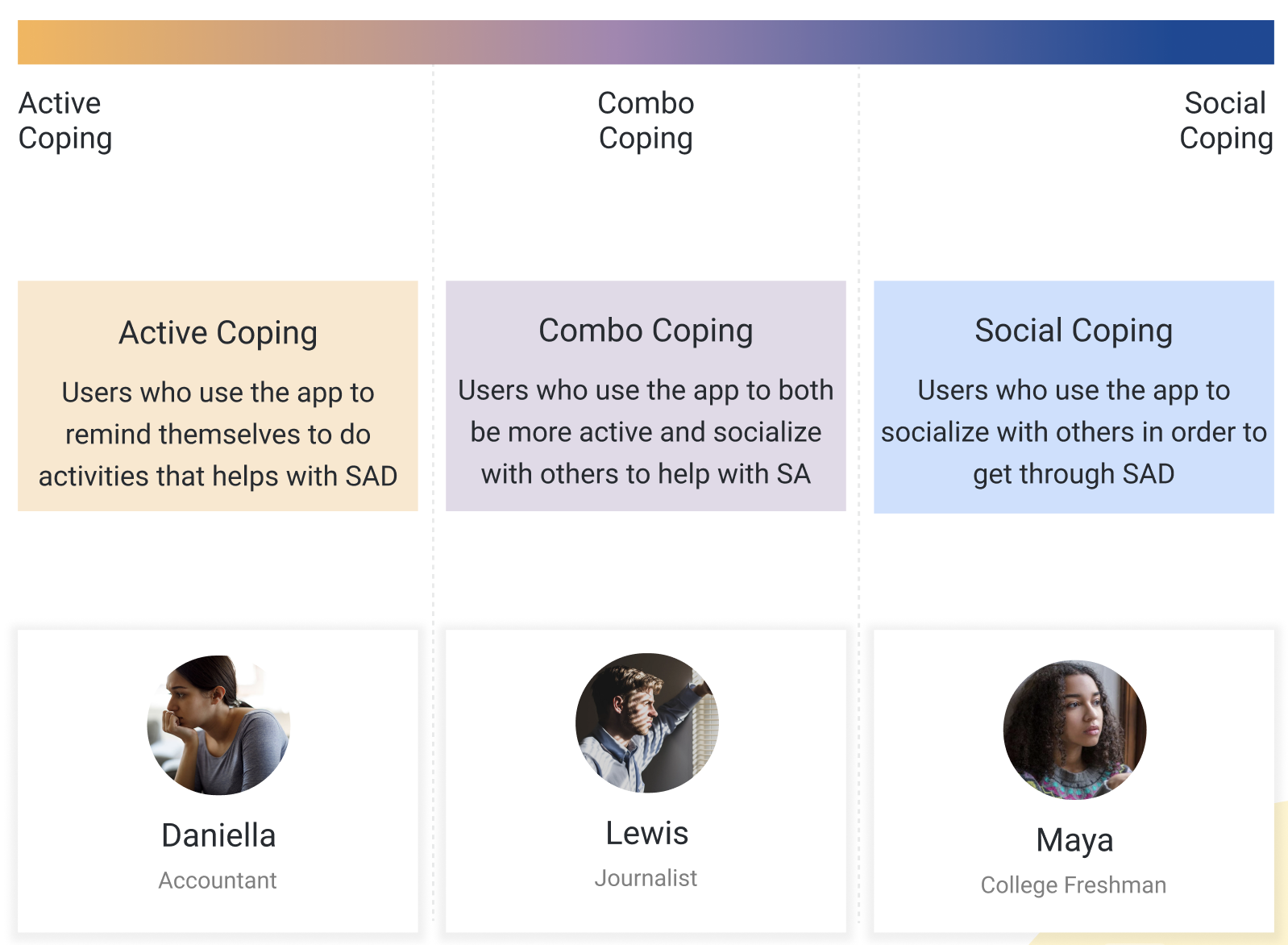

CONTENT ANALYSIS RESEARCH
To find out how we will write the copy for our app we decided to conduct a content analysis of other wellness/mindfulness apps. Additionally, we performed a competitive analysis to see how these apps used gamification.
KEY FINDINGS & INSIGHTS
- Gamification for mental health apps is very important, it can turn boring treatments into a fun and engaging experience. With game elements such as points, leveling systems, progress bars, users get rewarded by their behaviors, and they tend to engage more with the app.
- For mental health apps, it is also important to encourage users to complete small tasks and feel a sense of achievements without introducing anxiety, stress and FOMO.
RESEARCH - VOICE OF TONE
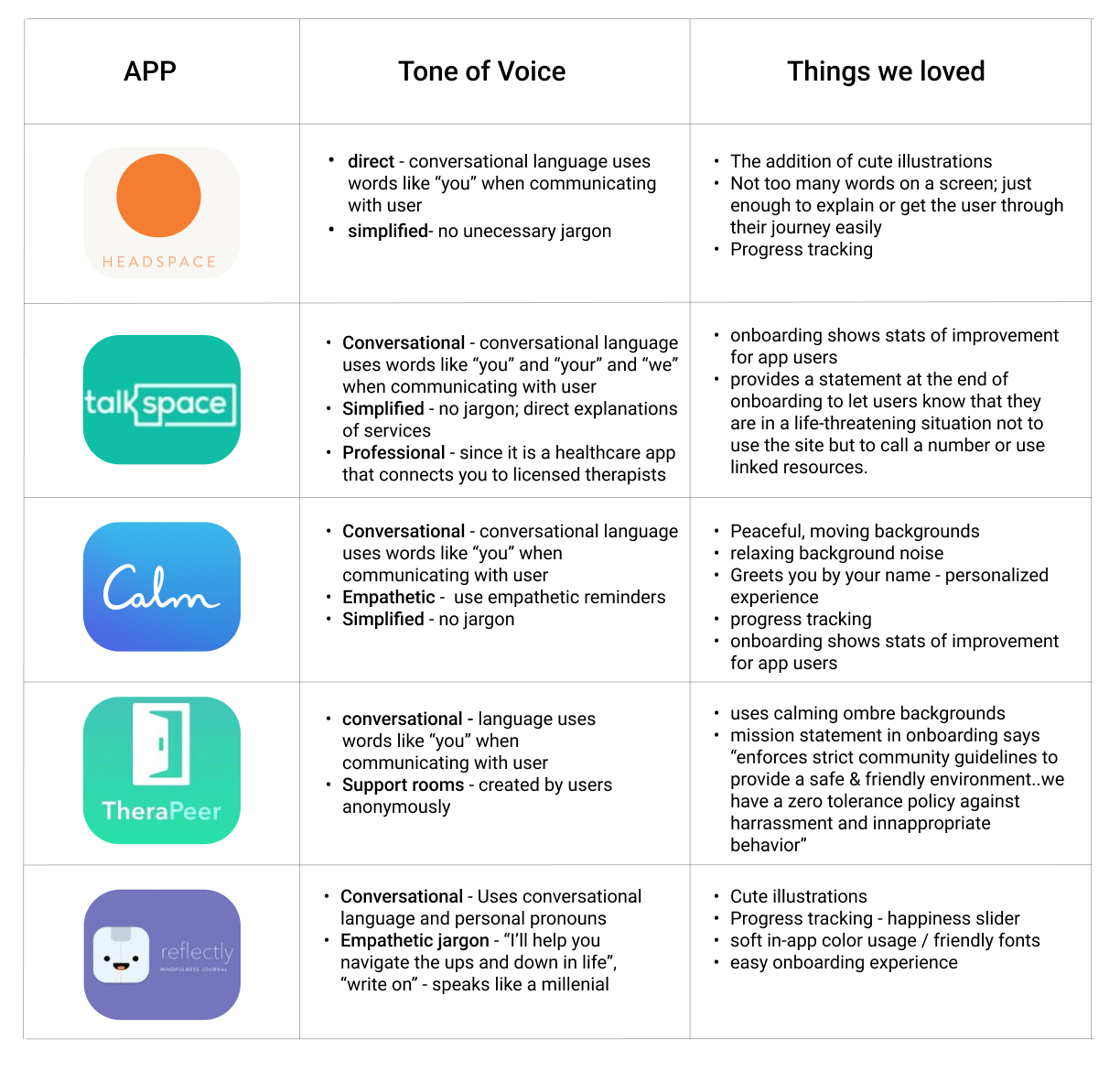
COMPETITIVE REVIEW
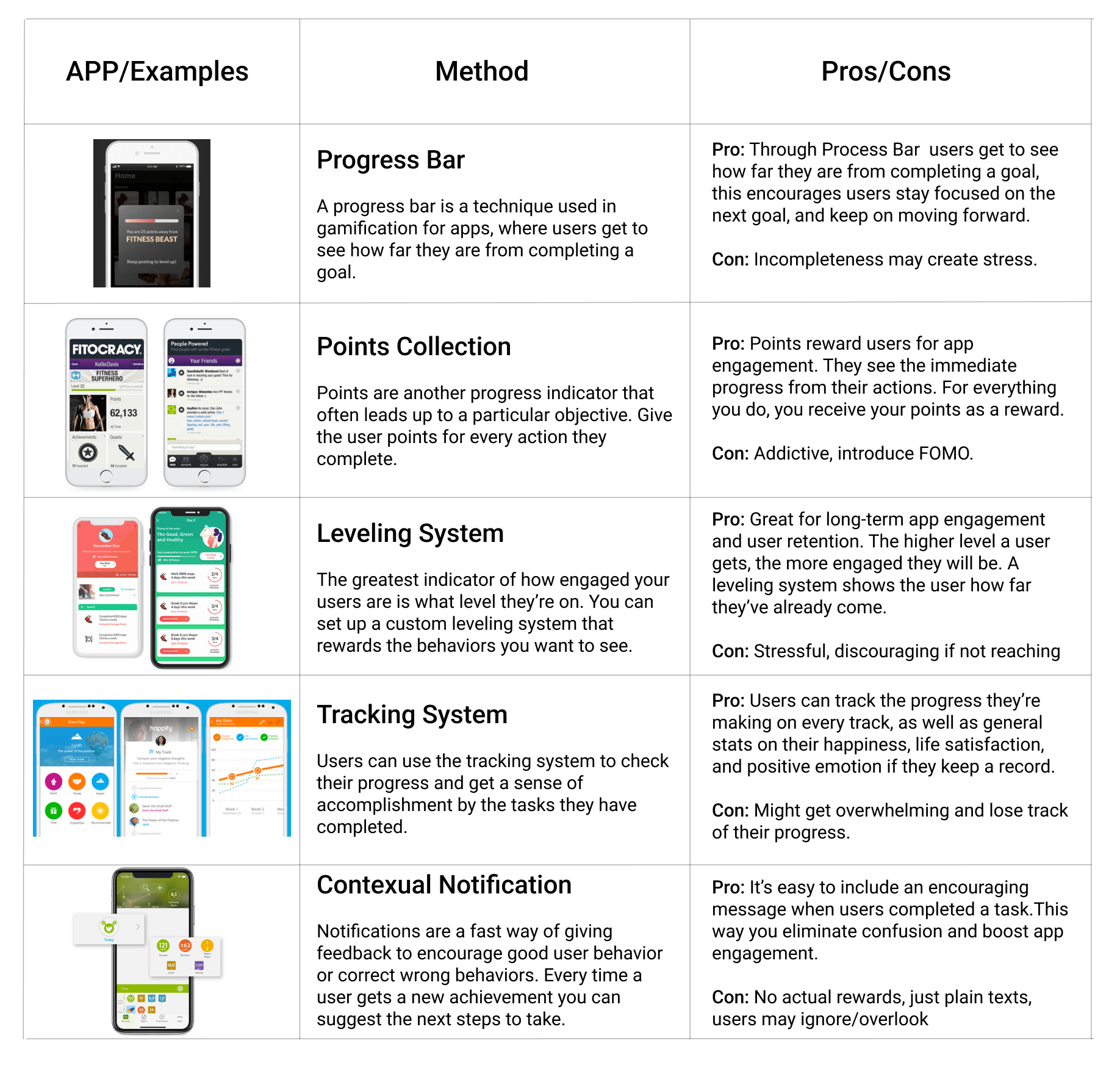
HOW MIGHT WE
Based on all the researches, we came up with the three how-might-we questions:
- How Might We encourage users to complete small goals and feel accomplished without introducing stress and FOMO?
- How Might We foster a comumunity of support for people who feel alone?
- How Might We provide a safe space for our users?
UX FLOW
Focusing on solving these how-might-we questions, we finalized the user flow:

MID-FI PROTOTYPE
Then we build a medium-fi prototype:
ON BOARDING PROCESS

COMMUNITY TAB

PROFILE TAB

ITERATION
We recruited 5 potential users to test our mid-fi prototype in order to learn:
- If our onboarding process is smooth and intuitive;
- If our progress tracking system makes sense to the users;
- What are the rooms users would like to enter in the community tab, and if there are other theme-based rooms user would like to add;
- If users would like to have personal messaging system and following feature;
- Fresh ideas and new opportunities to improve the user experience.
We then fixed the usability issues found during the test and made the prototype to high-fidelity.
MOODBOARD & STYLE GUIDE

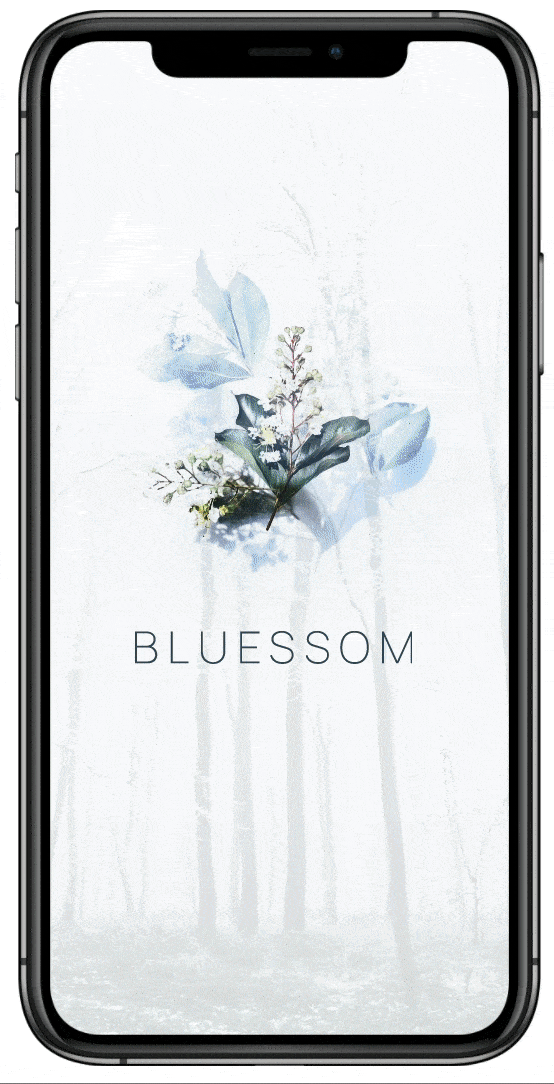
BREATHING EXERCISE & GOAL SET-UP
- Every time users open up the app, they will see an encouraging and heartwarming line to begin their day. After the landing page, they can see their bluessom garden, and start a 30-second deep breathing session. The aim of the deep-breathing session is to help users relax themselves by following the moving graphic.
- After that, we listed some recommend activities, which can be as small as “get some fresh air outside” or “take a walk”. They can also customize their own activities.
- After finishing the daily goals, users can click the checkbox, and when each goal is finished, the plant in the bluessom garden will grow accordingly, and gradually develop to a beautiful garden when users keep on finishing their small daily goals.
COMMUNITY
The idea of community derives from “AA Meeting”, that is aimed to “share their experience, strength and hope with each other that they may solve their common problem and help others to recover from depression.”
The community contains 6 boards: Vent (which also allow anonymous posting), Self-Care, Comedy, Pet, Zen, and Therapy.
Each post functions like a thread that people can like and reply to it.
Users can also save posts to their collections if they want to check it later.
For moderating purpose, users can report the posts that they found issue with; or “unfollow” the posts if they don’t want to see them in their timeline.

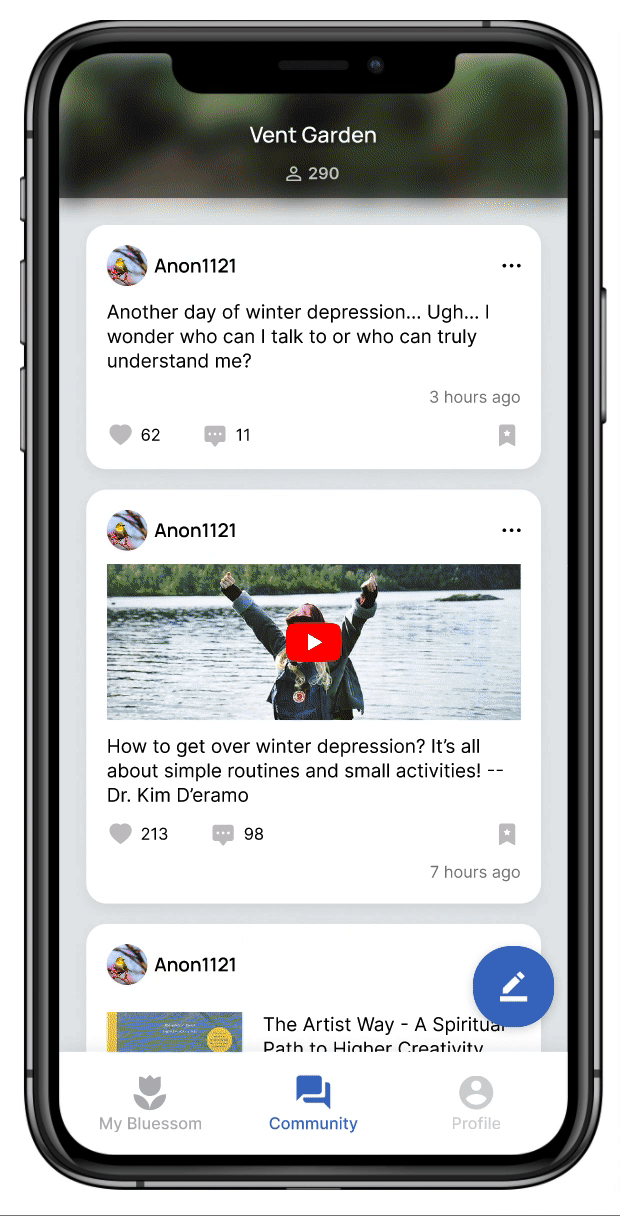
PROFILE
In the personal profile, users can check their own posts, the posts that they saved, friend list, the progress they have made, and messages with their friends.
Anonymous posts will only be able to view by the user themselves.
Users can change their privacy and security settings anytime.
They can also choose to open or close the anonymous mode in the settings too.
OUTCOME & NEXT STEPS
“Mental health is such a difficult topic to breach. It’s really great that this is the topic you picked.”
“Really enjoyed the breathing feature.”
- Develop Progress Tracking System
- Complete settings and privacy policy
- Optimize the options for daily goals
- Further user testing on accessibility & feature functionality
- Implements on additional features
